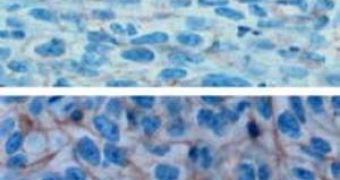Oncologists have for some time drawn attention to the fact that even the most potent forms of cancer therapies can have a risk of relapse, and that the return of the tumors is most likely caused by die-hard cells known as cancer stem cells. These are essentially the seeds of the disease, and there will always remain a risk of someone getting sick again if they are not destroyed. Now, experts believe they may have found a new drug, that allows them to target these stem cells selectively, and annihilate them.
The cells that originally mutate and trigger the formation of tumors are the toughest ones. They are reportedly able to withstand even the largest amounts of chemotherapy and radiotherapy, and drugs have little effect on them. Therefore, finding methods of destroying them alone, without invasive procedures to affect surrounding, healthy issue, has been a goal for oncologists.
By using high-throughput screening methods, researchers at the MIT Whitehead Institute for Biomedical Research and the Broad Institute, and from the Harvard University, managed to discover a substance that is able to kill breast cancer stem cells in mouse models.
The investigators are still uncertain whether the new drug will work as effectively in humans, but they argue that this is the best compound they could come up with thus far. Working with cancer stem cells is tremendously difficult, because they do not reside in the middle of tumors, and can be very hard to spot, harvest and analyze. In a new study published in the latest issue of the respected journal Cell, experts Eric Lander at the Broad Institute and Robert Weinberg at the Whitehead Institute announced the creation of epithelial cells that mimic the behavior of cancer stem cells, and which can be kept in this form for prolonged periods of time.
According to the science team, a library containing more than 16,000 chemical samples was cross-referenced with the newly obtained stem cells, in order for the best possible solution to be discovered. Early results hinted at the fact that the drug salinomycin may be a good starting point. The experts immediately began administering it to mouse models, at the same time comparing its action patterns with those of the established anti-cancer drug paclitaxel, Technology Review informs.

 14 DAY TRIAL //
14 DAY TRIAL //